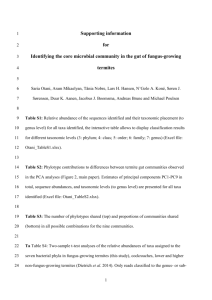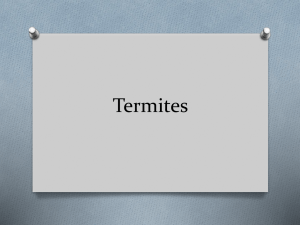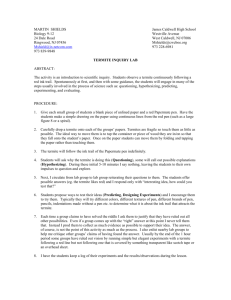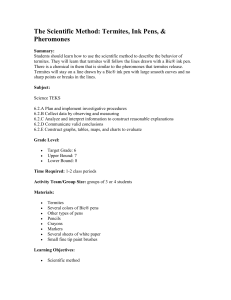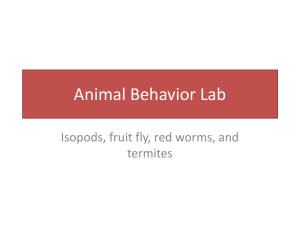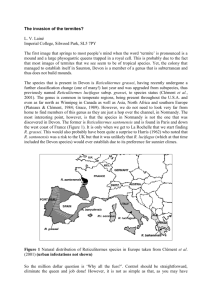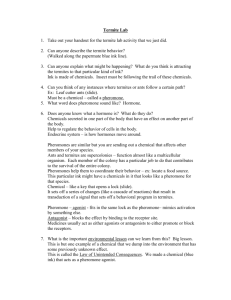File - mrsolson.com
advertisement
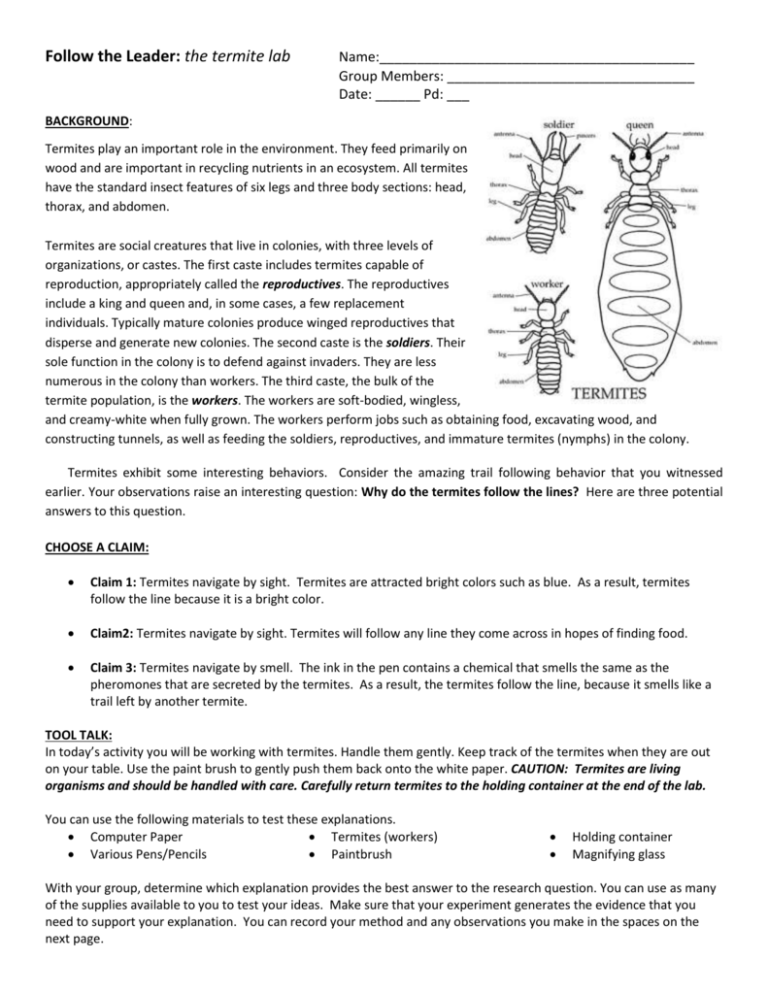
Follow the Leader: the termite lab Name:__________________________________________ Group Members: _________________________________ Date: ______ Pd: ___ BACKGROUND: Termites play an important role in the environment. They feed primarily on wood and are important in recycling nutrients in an ecosystem. All termites have the standard insect features of six legs and three body sections: head, thorax, and abdomen. Termites are social creatures that live in colonies, with three levels of organizations, or castes. The first caste includes termites capable of reproduction, appropriately called the reproductives. The reproductives include a king and queen and, in some cases, a few replacement individuals. Typically mature colonies produce winged reproductives that disperse and generate new colonies. The second caste is the soldiers. Their sole function in the colony is to defend against invaders. They are less numerous in the colony than workers. The third caste, the bulk of the termite population, is the workers. The workers are soft-bodied, wingless, and creamy-white when fully grown. The workers perform jobs such as obtaining food, excavating wood, and constructing tunnels, as well as feeding the soldiers, reproductives, and immature termites (nymphs) in the colony. Termites exhibit some interesting behaviors. Consider the amazing trail following behavior that you witnessed earlier. Your observations raise an interesting question: Why do the termites follow the lines? Here are three potential answers to this question. CHOOSE A CLAIM: Claim 1: Termites navigate by sight. Termites are attracted bright colors such as blue. As a result, termites follow the line because it is a bright color. Claim2: Termites navigate by sight. Termites will follow any line they come across in hopes of finding food. Claim 3: Termites navigate by smell. The ink in the pen contains a chemical that smells the same as the pheromones that are secreted by the termites. As a result, the termites follow the line, because it smells like a trail left by another termite. TOOL TALK: In today’s activity you will be working with termites. Handle them gently. Keep track of the termites when they are out on your table. Use the paint brush to gently push them back onto the white paper. CAUTION: Termites are living organisms and should be handled with care. Carefully return termites to the holding container at the end of the lab. You can use the following materials to test these explanations. Computer Paper Termites (workers) Various Pens/Pencils Paintbrush Holding container Magnifying glass With your group, determine which explanation provides the best answer to the research question. You can use as many of the supplies available to you to test your ideas. Make sure that your experiment generates the evidence that you need to support your explanation. You can record your method and any observations you make in the spaces on the next page. Guiding Question: Why do the termites follow the lines? Rewrite the claim that your group chose (the full length version please). This will be the hypothesis for your experiment. What is the independent variable? Write out your procedure as a bulleted list. What will your data table look like? What will your control group be? What other variables do you need to control? What safety precautions do you need to consider? What is the dependent variable?
